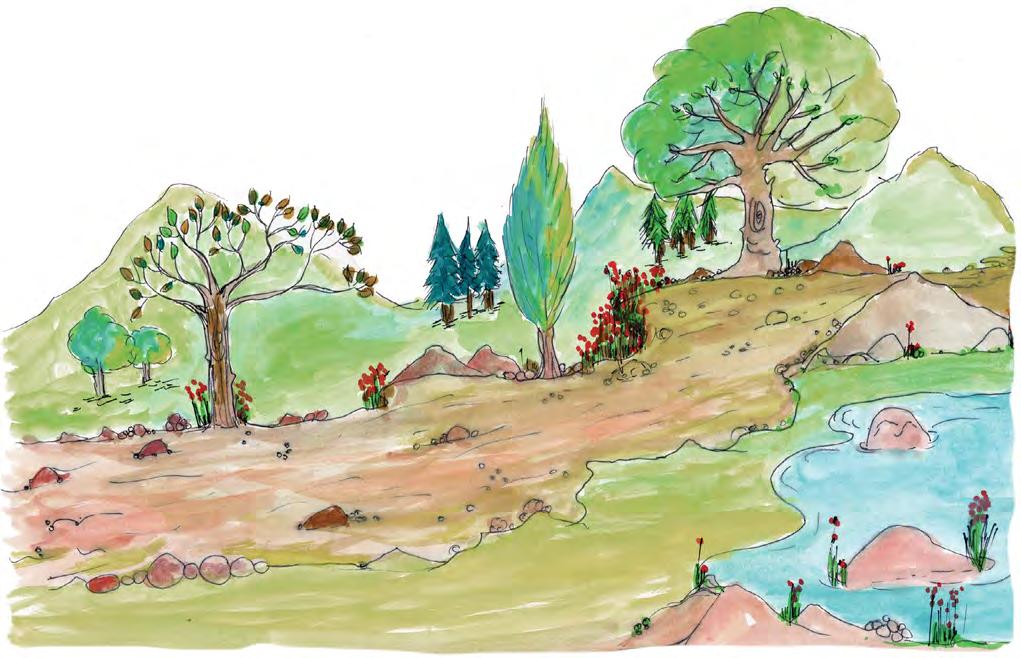
3 minute read
The Role of Stories
We have gathered a diverse collection of true personal stories of hurt, resilience and hope. Much learning has come from the stories and the process of telling them. This is an invitation for you to be more than readers, to take meaning out of them, and to be en-couraged to find ways to tell and reflect on your own stories so that you may contribute in some way to each other's learning and growth. As we share our stories in community, we recognize that we are part of a much greater story–God’s story. And, we see how through the Holy Spirit, God and Jesus continue to speak to us through story. Stories have power because, through them, the listeners may re-experience what happened vicariously and, through that process, reach a level of empathy otherwise unattainable. And as listeners, we are helped to find questions to guide our own evolving stories of our own journeys. But the teller also re-experiences what happened, so we must be mindful about asking each other to retell stories of pain and suffering. Telling a story can bring that experience back into our bodies, minds and spirits if the teller is carrying too much that is unresolved. Stories of trauma need safe spaces, sacred spaces where the healing spirit may enter and soothe. For many stories, where people still actively live the trauma, there are formal counseling settings with trained helpers for sharing. In preparing for sharing stories in community spaces, where the tellers feel safe and brave enough to do so, be intentional about what you are trying to learn through the stories. Look for these kinds of themes to emerge: • The inner strength that someone relied on to get through a hard time; • The people who came around them and provided love, stability and care; • The practices we used to help shape a positive next step (rituals, meditations, intentional actions, etc.). Acknowledge that churches and religious communities can and have caused great pain themselves, even while they can also be wonderful and life-giving places. What stories need to be told that can lead to recognition, accountability, forgiveness, repair and healing?
True stories and bridging dialogue
Advertisement
This Guide contains a number of true-life stories (all colored green). These stories are introduced and connected by reflective dialogues held between a number characters that we have created. While the characters are mostly fictional, their dialogue is shaped from theological reflections offered by several writers and also from the ongoing conversations we had in the editorial team.
A Journey Through This Guide: Finding Your Own Path
Gary Gunderson
There are many paths toward hope and healing from the hurt that trauma leaves behind. This guide can be many things to many people and congregations, and finding your own path is itself a healing step. We hope this guide becomes a practical resource for theology and practice in our congregations. We offer new language around hurt and hope by being rooted in the wisdom that comes from our own experiences of who God is and how God acts in our world. This is not wishful practice or just something that we think about or aspire to. Let’s dig into what we are already doing to cultivate thriving and growth. Let’s root ourselves in what we have actually done…what we are actually doing.
A resource for pastors and congregations. This guide is an effort to support healing and life for each other and the world.
An invitation to tell your stories of riotous roots. Healing, learning, and hoping start when we come together and testify to the roots of life we have touched along our journeys. A revelation of how traumatic and loving experiences impact us. When we know more about how these experiences link to our bodies, our communication patterns, our responses to stress, etc., we can start to see the dynamics and act in more healthy, life-giving ways with each other, our community and society. Christian-focused. While all religious traditions speak to these topics, this effort draws on Christian themes, images, scriptures and congregational life. A generative source! What we pay attention to grows. This guide calls us to lean into those things that cause life—connection, hope, agency, blessing, and intergenerativity.











